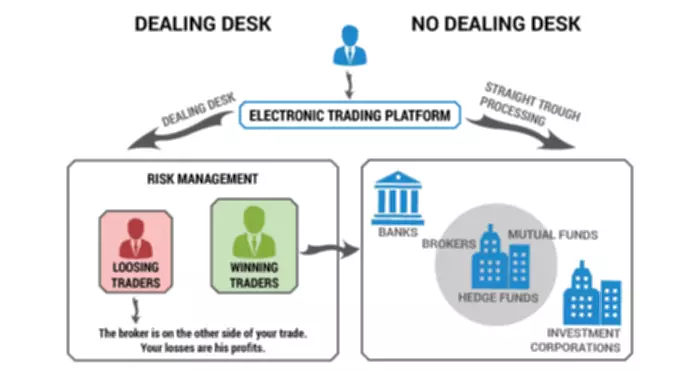Content
Automated market makers, or AMMs, are a common source of liquidity maintenance and trading support for DEXs. Although decentralised liquidity gives consumers more control and transparency, it can also be more volatile and fragmented. Everyone interested should have a thorough understanding of https://www.xcritical.com/ the various forms of liquidity. Every kind contributes differently to how the market functions, impacting everything from price stability to trade efficiency. The global cryptocurrency market is valued at $1.99 trillion, reflecting a 0.5% decline in the past day.
Key Takeaways: Liquidity in Crypto

This allows traders to make larger trades without causing drastic price fluctuations. crypto exchange liquidity solution High-liquidity cryptocurrencies such as bitcoin and ethereum, tend to have a large number of active buyers and sellers. This means there’s a greater chance of finding someone to buy or sell your cryptocurrency without significantly affecting its price. Emotional responses to market conditions, whether fear or excitement, can cause liquidity to fluctuate. During extreme market conditions, such as sharp price increases or crashes, liquidity often decreases.
Crypto Asset Liquidity vs Crypto Exchange Liquidity
With only a small number of buyers and sellers, users may experience higher price volatility, larger variations in the bid and ask spread, and a potential risk of market manipulation. Startup exchanges must overcome these challenges to become competitive with larger, more-established exchanges which are likely to have better liquidity Yield Farming and a lower cost of execution. In the first scenario, the market would have plenty of active traders, liquidity providers, trading volumes and new projects that build their business around crypto X. First, the large number of traders helps the market stabilise the price effortlessly and without market manipulation.
- It’s a conglomerate of limit orders that incrementally increase or decrease in price depending on whether it’s a buy or sell action.
- High liquidity can transform an exchange from a basic platform to a preferred trading hub.
- Liquidity refers to how easily an asset can be bought or sold without significantly impacting its price.
- Typically, exchanges provide a centralized pool of liquidity, particularly for large market cap stocks, and some countries enforce rules to promote a unified, cohesive market.
Liquid Crypto Market vs Illiquid Market
Liquidity pools are a core component of automated market maker (AMM) systems and enable the smooth operation of decentralized exchanges (DEXs). In a liquidity pool, users contribute their assets to create a collective pool of liquidity in exchange for a share of the fees generated from trading activity within the pool. The assets are typically paired and are used to facilitate trading on the platform. Liquidity pools operate by keeping the value derived from multiplying the value of both assets constant. You can think of it as a reservoir of funds that allows for decentralized, peer-to-peer trading without the need for a centralized intermediary. It allows market participants to trade digital assets quickly at more stable market prices, reducing the risk of slippage and ensuring a smoother trading experience in a liquid market.
Between Liquidity Constraints and Recovery Potential
This approach was quite different from most protocols, as these features are usually reserved for the exchange operators or privileged market makers. But the risk with these vaults is no different from other vaults; if traders become more profitable or the market-making strategy goes south, the yield is lower. It is also the first DEX to introduce scale orders, a popular type of order in traditional markets. It’s a conglomerate of limit orders that incrementally increase or decrease in price depending on whether it’s a buy or sell action.
Closest to our counterfactual v2 spread (Cv2S) metric for liquidity concentration is the capital allocation efficiency (CAE) metric of [18]. While CAE is dependent on the trades that occurred in the pool during the calibration period, Cv2S is a function of trade size and independent of other trades. Thus, two pools with the same “liquidity landscape” can have different CAE values, but always have the same Cv2S given trade size. Jupiter Perps was launched in 2022 as a DEX and liquidity aggregator on the Solana blockchain. It’s not only fast, but also extremely generous with risk-on traders, allowing them to trade futures contracts with up to 100x leverage.
It can lead to large price swings, making it harder for market participants to trade digital assets at stable prices. When there is high trading volume, more buyers and sellers are active, which leads to greater liquidity. Market depth, which refers to the number of buy and sell orders at different price points, also plays a role. A deeper market allows larger trades to be executed without significantly impacting the asset’s price, contributing to more liquid conditions.

Public companies are obliged to produce a balance sheet as part of their audited accounts, which shows their assets and liabilities in order of liquidity. In this instance, liquid assets refer to assets that are expected to be converted to cash within a year, whereas liabilities refer to financial obligations due within a year. In its simplest form, liquidity indicates how easy it is to quickly convert a cryptocurrency into cash — and whether this can be achieved without the asset’s value suffering.
With central banks like the Federal Reserve maintaining tight monetary policies, reduced M2 growth restricts the flow of capital into high-risk assets, including Bitcoin and Ethereum. Besides content writing, José is a finance and blockchain journalist with over 3 years of experience, covering the latest news on Web3, DeFi, GameFi, and all things crypto. Hyperliquid has carved out its own niche within the perpetuals trading ecosystem, daring to take more risks where others would remain conservative. Let’s assume that you have funds (USDC) on Ethereum and you want to trade on Hyperliquid. You can check which networks are currently connected on your wallet from the top left drop-down menu.
I believe that every intricate concept, idea and methodology can be presented in an understandable and exciting way, and it is my job to find that way with every new topic. I constantly challenge myself to produce content that has indispensable value for its target audience, letting readers understand increasingly complex ideas without breaking a sweat. Some exchanges also implement customer verification measures to enhance transparency. These measures involve aggregating customer account balances into a Merkle tree, which allows auditors to verify the inclusion of individual customer accounts without disclosing specific account balances. These reports provide a snapshot of the exchange’s reserves, including the amount of Bitcoin (BTC), Ethereum (ETH), and Tether (USDT) held. Evan Jones was introduced to cryptocurrency by fellow CryptoVantage contributor Keegan Francis in 2017 and was immediately intrigued by the use cases of many Ethereum-based cryptos.
Furthermore, trading behavior on these exchanges can be impacted by regulatory changes or uncertainty. These programs encourage liquidity provision while attracting traders and maintaining market stability. Introducing new trading pairs attracts a broader range of traders, increasing trading activity and, as a result, liquidity. More traded pairs usually have higher liquidity than less frequently traded pairs. Furthermore, the presence of market makers and liquidity providers significantly impacts liquidity by ensuring a steady flow of buy and sell orders.
In simple terms, liquidity refers to how easily an asset can be converted into cash without significantly losing its value. Typically, high liquidity indicates a strong market with many buyers and sellers, allowing for seamless transactions and stable pricing. This helps investors enter or exit positions efficiently and minimise transaction costs and the potential of sudden price swings. When it comes to liquidity and the crypto sector, one of the most liquid digital assets is considered to be Bitcoin.
When a stock is considered liquid, it means that there are a sufficient number of buyers and sellers in the market. This high level of trading activity allows investors to enter or exit positions without significant delay or price fluctuation. Higher liquidity reduces the risk of price manipulation and provides a more accurate representation of an asset’s market value. It also allows traders to enter or exit positions with minimal slippage, which is the difference between an asset’s expected price and the executed price. This reduces the risk of price manipulation and makes the market more reliable. They accomplish this by simultaneously putting buy and sell orders at various price points, establishing a market for traders.

